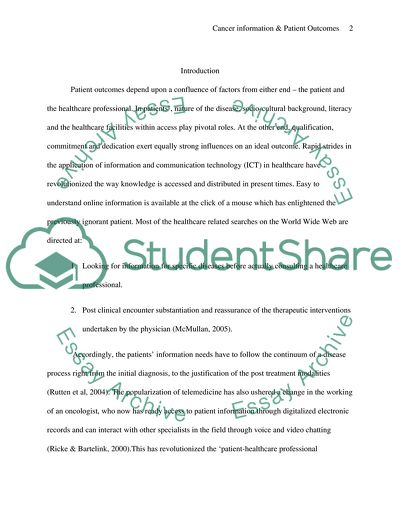Cite this document
(“The Impact of Web Based Cancer Information on Patient Outcomes Article”, n.d.)
The Impact of Web Based Cancer Information on Patient Outcomes Article. Retrieved from https://studentshare.org/health-sciences-medicine/1728970-the-impact-of-web-based-cancer-information-on-patient-outcomes
The Impact of Web Based Cancer Information on Patient Outcomes Article. Retrieved from https://studentshare.org/health-sciences-medicine/1728970-the-impact-of-web-based-cancer-information-on-patient-outcomes
(The Impact of Web Based Cancer Information on Patient Outcomes Article)
The Impact of Web Based Cancer Information on Patient Outcomes Article. https://studentshare.org/health-sciences-medicine/1728970-the-impact-of-web-based-cancer-information-on-patient-outcomes.
The Impact of Web Based Cancer Information on Patient Outcomes Article. https://studentshare.org/health-sciences-medicine/1728970-the-impact-of-web-based-cancer-information-on-patient-outcomes.
“The Impact of Web Based Cancer Information on Patient Outcomes Article”, n.d. https://studentshare.org/health-sciences-medicine/1728970-the-impact-of-web-based-cancer-information-on-patient-outcomes.


